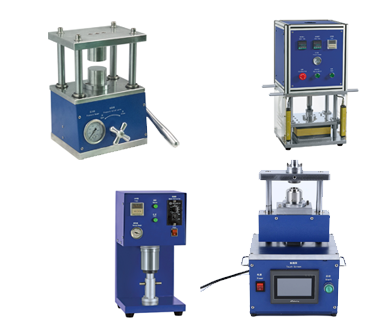University Standard
University Standard
Title
University of North Carolina at Chapel Hill Biological Safety Manual – Chapter 20: Biosafety Guidance for Research with the SARS-CoV-2 Virus or Clinical Samples from Known or Suspected COVID-19 Patients
Introduction
Purpose
The purpose of this document is to provide a reference framework regarding laboratory biosafety related to research with the SARS-CoV-2 virus and clinical samples that may originate from COVID-19 positive patients. This guideline, based on currently available scientific literature and existing guidance documents, serves as a platform for labs to review the requirements for safely handling COVID-19 samples.
Scope
This standard applies to research activities only. It is not intended to cover the actual collection of clinical specimens from patients.
Standard
Acronyms
- BSL- Biological Safety Level
- EHS- Environment, Health and Safety
- IBC- Institutional Biosafety Committee
- PI- Principal Investigator
- PPE- Personal Protective Equipment
Risk Assessment
To ensure the occupational safety of our personnel working with the SARS-CoV-2 virus or clinical specimens from suspected or confirmed COVID-19 cases, reasonable precautions must be taken to ensure such material is handled in a safe manner in laboratories appropriately equipped to be performing the research. A site-specific and activity-specific risk assessment should be conducted to identify and mitigate risks and determine if enhanced biosafety precautions are warranted based on situational need. Containment level, personal protective equipment (PPE) and necessary administrative, work practice and engineering controls for the proposed research are determined by the potential hazard of the biological material used (ie. virus or clinical sample; sample type) and the anticipated procedure(s) being performed on this material. These are described in more detail below.
Please note: Institutional Biosafety Committee (IBC) approval of research may be required depending on the nature of the proposed research or if high-risk procedures are identified.
Principal Investigator (PI) Responsibility
PI’s are responsible for ensuring that all research with SARS-CoV-2 virus or known/suspected COVID-19 positive materials is conducted according to containment and PPE requirements, described later in this document. Before initiating any project involving SARS-CoV-2/COVID-19 patient samples, the PI must attain prior approval from the Biological Safety Office.
The PI is also responsible for certifying that all personnel working in the laboratory are:
- Approved for access to the lab and research materials
- Educated on the hazards of the work
- Trained on the PPE requirements for conducting the work and have demonstrated competency in donning/doffing required PPE
- Trained to be proficient in the procedure(s) they are required to perform
- Trained to be proficient in the use of all equipment (e.g. BSCs, centrifuges) they are required to use
- Trained in how to respond to and report spills, accidents and potential exposures.
- Trained in how to manage biohazardous waste in the laboratory
Laboratory Hazard
The most common routes of exposure are from inhalation of respiratory droplets and aerosols, or direct contact of mucous membranes with respiratory droplets. Spread through face touching with contaminated hands (ie contact/fomite transmission) may also to be a mode of transmission.
Therefore, exposure hazards in the lab may include, but are not limited to:
- Aerosol-generating activities (e.g. vortexing, centrifugation, sonication, opening tubes)
- Splash/droplet creating activities (e.g. shaking incubators, pipetting)
- Unprotected mucous membranes
- Uncovered wounds
- Face touching
Symptoms of COVID-19 may include the following:
- Cough
- Difficulty breathing or shortness of breath
- Fever
- Chills
- Muscle pain
- Headache
- Sore throat
- Loss of taste or smell
Guidelines for Laboratory Processing and Procedures
This guideline framework is a living document based on existing guidance and available information. As more information becomes available, this biosafety guideline framework may be revised to reflect updated precautions on handling these specimens as deemed necessary.
The table below represents an initial biosafety framework for research with the SARS-CoV-2 virus or clinical samples suspected or known to be infected with this virus. For the purpose of this guideline, specimens may include but are not limited to blood, serum, plasma, tissues, feces, urine, sputum, mucosal samples, bronchoalveolar lavage, and other respiratory secretions.
Biosafety Level 2 Laboratory Processing and Procedures
- Assays with human or animal primary specimens already inactivated (ie. rendered non-infectious) by approved methods1
- Visual examination of inactivated specimens or tissues (e.g. formalin-fixed)
- Visual examination of bacterial and fungal cultures
- Pathologic processing of formalin-fixed or otherwise inactivated tissues
- Routine staining and microscopic analysis of heat- or chemically-fixed smears
- Preparation of clinical specimens for packaging and transport
- Storage of clinical specimens
Biosafety Level 2+ (BSL-2 Enhanced) Laboratory Processing and Procedures
- Aliquoting and/or diluting human or animal primary specimens
- Processing of any non-inactivated specimen for research purposes
- Nucleic extraction from human or animal primary specimens5
- Antibody and antigen (ie. serologic) assays with human or animal primary specimens
- Preparation and fixing (heat or chemical) of smears for microscopy
- Inactivation of human or animal primary specimens for downstream research applications
- Inoculation of bacterial and fungal culture media
Biosafety Level 3 Laboratory Processing and Procedures
- Viral propagation of SARS-CoV-2 virus
- Generation of infectious clones of SARS-CoV-2 virus
- Storage of viral stocks of SARS-CoV-2 virus
- Concentration or isolation of SARS-CoV-2 from human or animal primary specimens
- Use of SARS-CoV-2 in animal models
- Procedures with human or animal primary specimens that produce aerosols outside of primary containment
- High-speed cell sorting (FACS) of unfixed cells
Inactivation
In order for samples to be considered non-infectious and safe to work with at lower containment levels, or outside of primary containment (e.g. BSC), samples must be chemically- or thermally-inactivated using a method approved by UNC Biological Safety Office and/or IBC. If limited data supports the use of a proposed inactivation method, the PI may be requested to perform an in-house validation to verify the efficacy of the method.
Packaging and Transport
For research laboratory receipt of specimens from the point-of-care center, samples should be transported in a durable, leak-proof secondary container to minimize the risk for breakage or a spill. The secondary container should be surface decontaminated using an approved disinfectant and contact time before transport. Samples should be unpacked inside the dedicated BSC and not on the bench top.
Patient specimens from suspected or confirmed cases should be transported as UN3373, “Biological Substance Category B”, when they are transported for diagnostic or investigational purposes. Viral cultures or isolates should be transported as Category A UN2814, “infectious substance, affecting humans”. All specimens being transported (whether UN3373 or UN2814) should have appropriate packaging, labelling and documentation. All personnel packing and shipping specimens, cultures or isolates must be trained to pack and ship according to the regulations. Contact Shipping Specialist ([email protected]) regarding requirements and training for shipping biological and biohazardous material.
Storage
For storage of clinical samples from suspected or known COVID-19 patients, it is recommend these samples be physically separated from other samples and are clearly labeled to prevent inadvertent handling and processing. Access to freezers containing such samples should be restricted (ie. via lock) to individuals authorized to handle and process these samples.
Biological Safety Level 2+ (BSL-2 enhanced) Safety Precautions
The majority of research using suspected or known COVID-19 specimens will be performed under BSL-2 containment with BSL-3 practices and procedures, commonly known as “BSL-2+” or “BSL-2 enhanced”. Depending on the type of samples (as outlined below), the nature of the enhanced PPE and practices may differ.
Standard Operating Procedure (SOP)
A facility-specific BSL-2+ Standard Operating Procedure (SOP) based on a risk assessment of the proposed research and laboratory procedures must be developed and approved by the Biosafety Office prior to initiating your research. The SOP will also cover requirements for the physical lab space.
Training
All research staff must complete the following training:
Personal Protective Equipment (PPE)
The following basic PPE is required, and may be augmented by additional PPE as identified in the lab-specific BSL-2+ SOP:
- Dedicated closed-front lab coat with closed cuffs.
- Sleeve covers may be used if open cuff lab coats are worn.
- A disposable splash-resistant apron may be worn if an open-front lab coat is worn.
- Double gloves
- Surgical mask; OR
- An N95 mask may be required where aerosol-generating activities cannot be contained within a BSC or other primary containment device.
- Wearing of an N95 respirator requires medical clearance along with fit testing and enrollment in the respiratory protection program.
- Face shield to protect against splashes to the face, and also act as a physical barrier to sub-conscious touching of the face with contaminated gloves.
Engineering and Work Practice Controls
- All manipulations of clinical samples should be performed in a certified biosafety cabinet (BSC)
- Activities that may cause splashes, droplets, or aerosols should be avoided
- Sealed rotors or safety cups must be used for centrifugation of specimens.
- Rotors and cups must be loaded and unloaded in the BSC
- Use screw-top tubes in place of snap cap tubes to minimize aerosol generation when opening tubes and to reduce possibility of lids “popping” open unintentionally.
- Use aerosol-resistant or barrier pipette tips
- Eliminate or minimize the use of sharps
- Collect all waste within the BSC while conducting experiments, then remove the small biohazard waste bag and place it into a larger biohazard waste container.
Disinfectants
For surface decontamination of workspaces, equipment and for chemical inactivation of liquid biomedical waste, only EPA List N disinfectants and contact times may be used. See About List N: Disinfectants for Coronavirus (COVID-19) for the complete list of products that meet EPA’s criteria for use against SARS-CoV-2.
Hand Hygiene
To minimize the risk of self-inoculation from contaminated hands and to reduce the risk of potential transmission to others, hands must be thoroughly washed with soap and water after completion of work and prior to leaving the lab.
Extracted RNA
The SARS‐CoV‐2 virus is a positive strand single-sense strand RNA virus. RNA extracted from a virus‐containing sample may be considered “infectious” since introduction of genomic RNA into permissive cells may allow for generation of infectious virus. As such, genomic RNA must be handled at BSL-2, or above, and MAY NOT be introduced into mammalian cells through transfection, electroporation or other means unless the work is being performed under BSL-3 containment. Measures must be taken to protect individuals working with SARS-Cov-2 RNA including restricted use of sharps and protection against contamination of the skin, mucous membranes and laboratory working surfaces.
Related Requirements
External Regulations
Contact Information
Name: Biological Safety Team, Environment Health and Safety
Email: [email protected]





